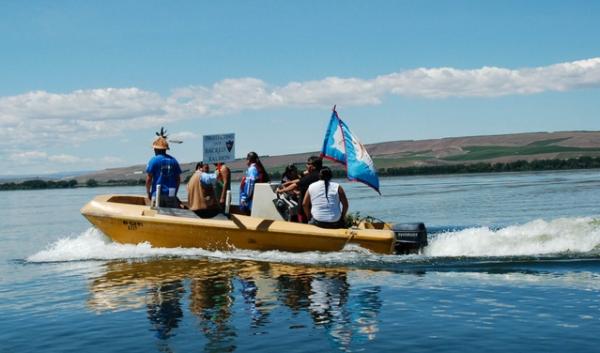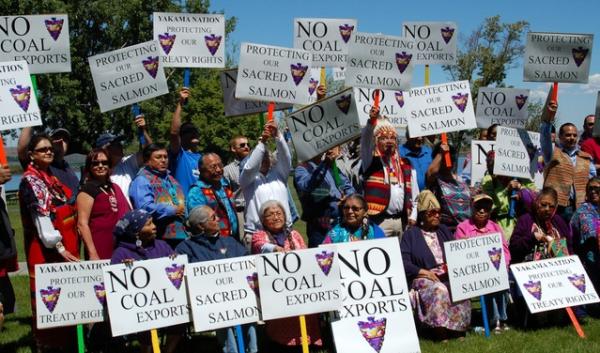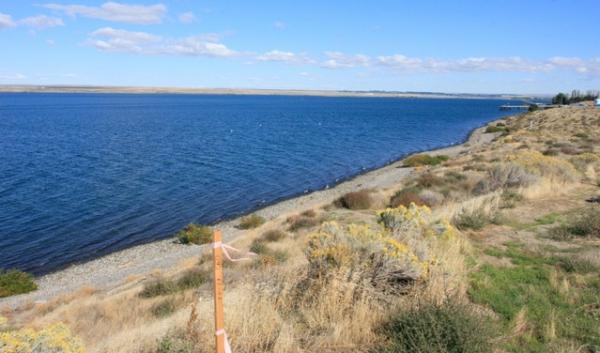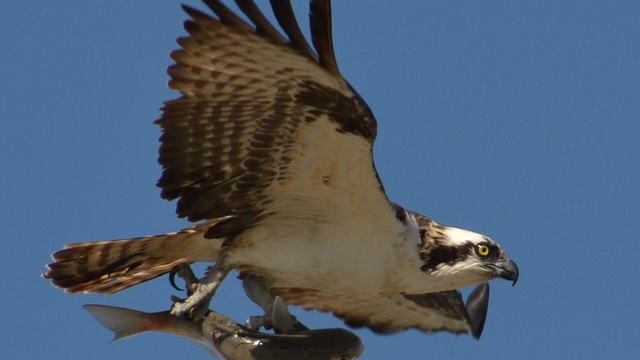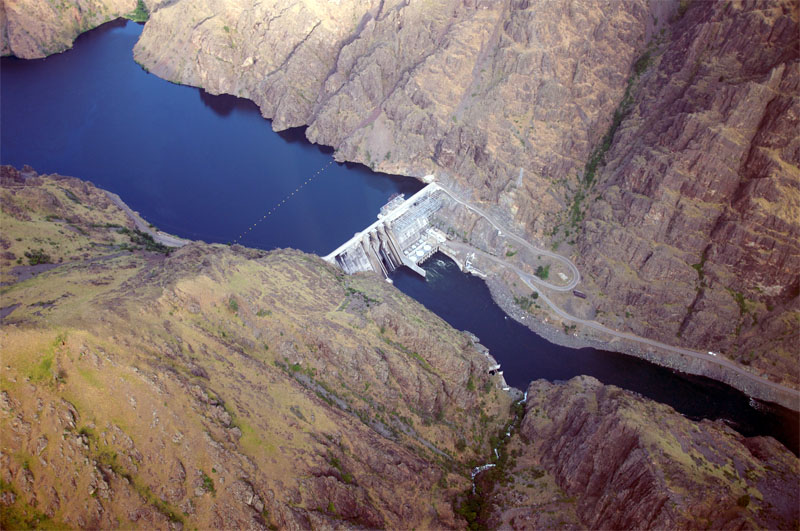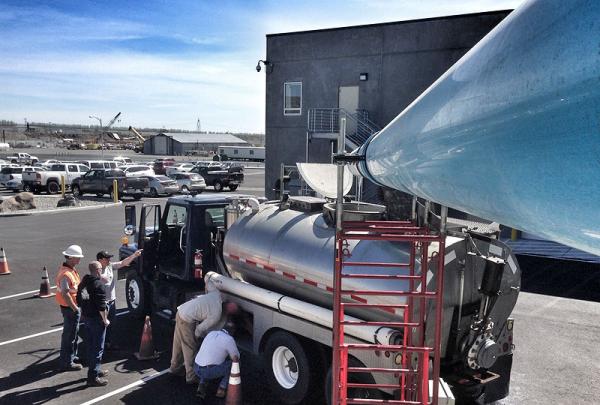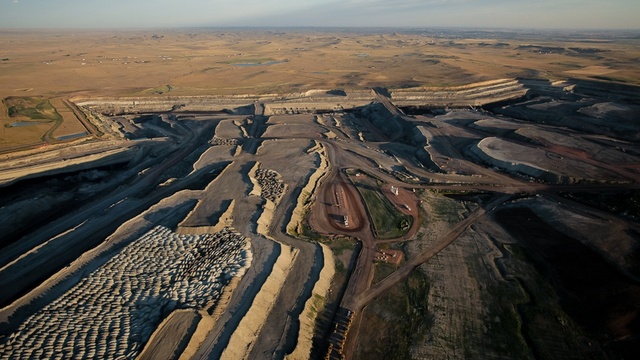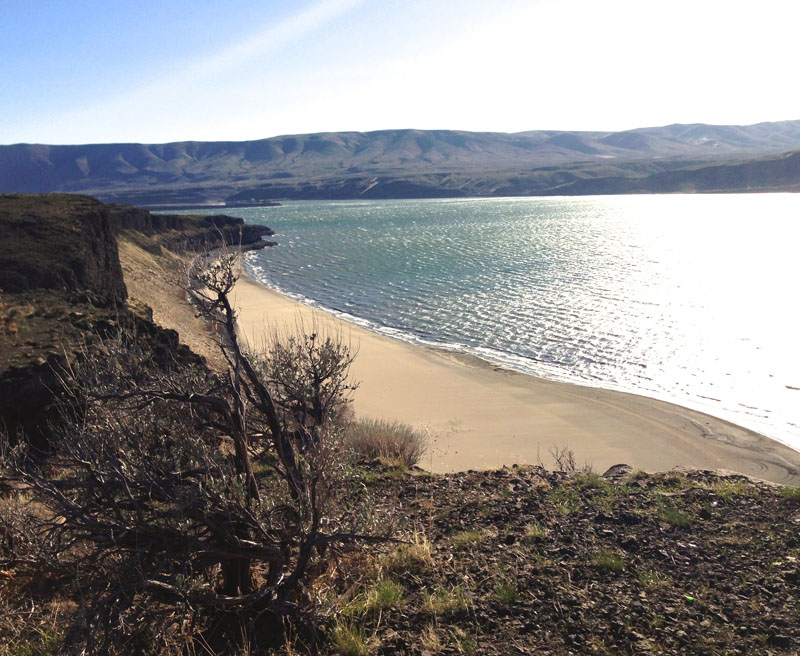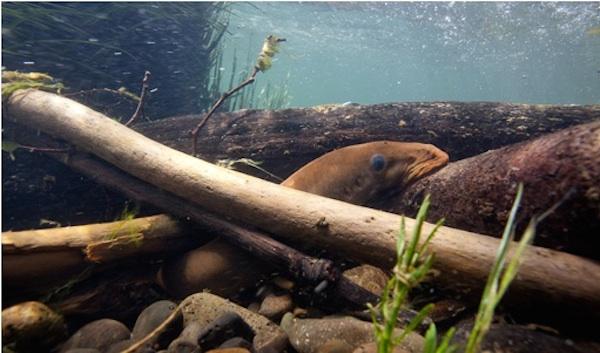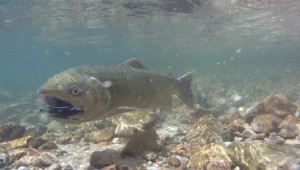By Wayne Kruse, Herald Writer
April 10, 2014
The spring chinook run on the Columbia River has finally picked up, just in time for the season to expire. The popular lower-river fishery for bright, feisty springers closes Monday, and no season extension is planned at this point. After the numbers are crunched, it’s possible an extension could be announced, Fish and Wildlife Department biologist Joe Hymer in Vancouver said, but it probably wouldn’t take place until mid-May and it would be a short extension.
“What I think they’re looking at,” Hymer said, “would be to run it right on into the summer chinook season.”
The springer fishery started slowly, due in part to high, dirty, cold water conditions, Hymer said, and better success rates have followed a clearing, warming trend.
“We got off to a bad start,” he said, “but fishing has picked up the last few days to a point where it looks like we’ll come close to hitting predictions.”
The kings have been scattered from Cathlamet up to BonnevIlle Dam, and fishing has been good one day and not so good the next. Anglers are trolling herring, with or without a FishFlash, on both tides but primarily in a downstream direction. Others anchor on the ebb and put out Kwikfish with a sardine or tuna-belly wrap.
Tuna belly?
Sardines, anchovies, even herring in a pinch, but tuna belly?
“Yeah,” Hymer said. “Lots of oil and scent there. Works pretty well.”
Popular plug colors include silver, chartreuse, greens and pinks.
State creel checks late last week and over the weekend on the river below Bonneville counted 2,557 salmonid anglers (including 835 boats) with 316 adult and two jack springers, and nine steelhead. Effort had increased through Sunday, when a flight counted 1,300 boats and 1,146 bank anglers on the lower river.
Peninsula steelhead
A very good wild-stock steelhead fishery is underway on the Olympic Peninsula, according to Bob Gooding at Olympic Sporting Goods (360-374-6330), and unlike a lot of late seasons, the Sol Duc isn’t the only venue.
“It’s a good run of native fish,” Gooding said. “The hatchery run this winter was disappointing, but the wild fish are showing up pretty well.”
Most of the eight rivers centered in the Forks area that allow retention of one native steelhead per season have been putting out fish, Gooding said. The Sol Duc is probably the best, especially since there are a few spring chinook available on the lower end.
“Add springers to a good late steelhead run and you have a circus,” Gooding said. “Pressure on the Sol Duc has been pretty heavy.”
The Calawah, Bogachiel and Hoh also have been kicking out natives, according to Gooding, which has eased crowding on the Sol Duc a little.
The Hoh is popular, particularly with fly fishermen.
“They don’t catch a ton of fish,” Gooding said, “but a lot of them fish the Hoh. It has a lot of open gravel bars, access is pretty good, and it’s a relatively easy river to fish.”
Almost everyone else uses a float/jig or float/pink plastic worm.
“And I personally don’t care for that gear,” Gooding said. “I may be old-fashioned, but I like to drift my rig down the gravel and feel that ‘tap, tap’ and know I’m about to have a blast. Float fishing, all you do is sit and watch the float all day and when it goes ‘blip’ you start reeling and the fish is either there or it isn’t. Not my cup of tea.”
State Fish and Wildlife Department personnel checked 82 anglers on the Sol Duc over the weekend, 71 boat fishermen and 11 bankers, with two native fish kept and 120 releasedplus two hatchery fish kept. On the Bogachiel it was 12 boat fishermen with 16 natives released and two hatchery fish kept. On the lower Hoh, it was 35 bank anglers and 32 boaters with 22 natives released, and on the upper Hoh, 48 anglers with 13 natives released.
Razor clams
The last razor clam dig on the coastal beaches drew a near-record crowd, probably because of the switch from winter evening tides to the more popular morning tides. Weather and surf didn’t cooperate fully, according to state shellfish manager Dan Ayres in Montesano, and the average number of clams per person swung from 4.1 to about 13, depending on the day and the beach.
Next up is a tentative series of tides as follows: Monday, 6:46 a.m., plus 0.2 feet, at Twin Harbors beach; Tuesday, 7:24 a.m., minus 0.3 feet, at Twin Harbors and Long Beach; Wednesday, 8:03 a.m., minus 0.6 feet, at Twin Harbors and Long Beach; April 17, 8:43 a.m., minus 0.8 feet, at Twin Harbors and Long Beach; April 18, 9:26 a.m., minus 0.8 feet, at Twin Harbors, Long Beach and Mocrocks; April 19, 10.14 a.m., minus 0.7 feet, at Twin Harbors, Long Beach, Copalis and Mocrocks; and April 20, 11:06 a.m., minus 0.4 feet , at Twin Harbors, Long Beach, Copalis and Mocrocks.
Ayres warns clam diggers that a 2014 license is needed. Licenses range from a three-day razor clam license to an annual combination fishing license.
Mike Chamberlain at Ted’s Sport Center in Lynnwood (425-743-9505) looked around the area and came up with the following:
Blackmouth fishing: better the farther west you go, around Port Townsend and beyond; slow locally.
Kokanee: starting to show in Lake Stevens, but probably won’t be steamin’ until at least the end of April.
Smelt: The Oak Harbor Marina and Cornet Bay are putting out surprisingly good smelt jigging, or at least better than it was early in the winter season.
Fly fishing: Pretty fair reports from fly fishermen working Lone Lake on Whidbey Island and Pass Lake south of Anacortes.
For more outdoor news, read Wayne Kruse’s blog at www.heraldnet.com/huntingandfishing.
